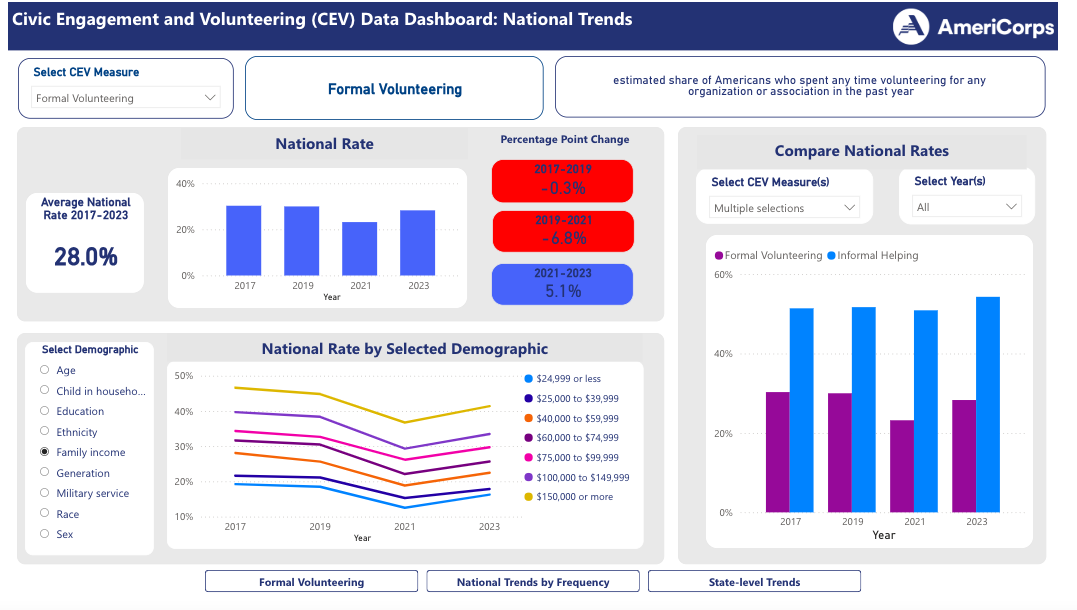This week’s module was all about the new models libraries are capable of. Specifically, I was very moved seeing libraries partnering with restaurants to create a virtual cooking series, the community-managed Chicago Tool library, and the “mobile cooking literacy program” (Books and Cooks) at the Camden County Library. For me, these models stood out because of how these libraries met a very specific need in their community. However, one thing that I noticed was also how each of these programs emphasized how much community effort was needed to pull it off. This is especially true in the cases of the Chicago Tool Library and Camden County’s Books and Cooks, which depend on a roster of trained volunteers to staff them.
It got me wondering: how do libraries recruit and retain volunteers in this new era of libraries? There are a few things to think through to answer this question. To begin with, it can be hard to recruit volunteers in the first place, especially ones that would be consistently helping with long-term programs. The other side of the issue is determining which programs would engage people to want to volunteer for them: it’s one thing to identify a program that would meet a need and another thing to find people interested in helping to maintain said program. While the U.S. Census Bureau and Americorps’ Civic Engagement and Volunteering (CEV) dashboard reports that formal volunteering has slightly increased between 2021 to 2023, the data only reflects whether or not someone has engaged in volunteering, not how often they volunteer or how long it took an organization like that library to recruit and possibly train them.

According to American Libraries, several components are important for recruiting and retaining library volunteers. There needs to be a rich volunteer culture, which may need to be cultivated. This means that not only do people know about volunteering opportunities at the library, but they also feel encouraged to continue volunteering. To do this, libraries should actively build community so that patrons feel connection and ownership over their time at the library. Staff also need to “play matchmaker,” which means pairing volunteers with programs that meet their interests, capacity, and skillset – after all, an invested volunteer is more likely to stay. Finally, library staff shared that retention can be maximized by regularly checking in with volunteers and recognizing their efforts. From formal recognition ceremonies and check-ins to informal acts such as providing snacks, cultivating volunteer retention is its own skill aside from recruiting.
As I think about how I can apply what I have learned from this module to my own career, I’m starting to understand how important outreach will be in order to provide engaging library programming and services. While many of the programs I do now rely very little on volunteer efforts, community needs and interests shift and the future may call for more staff-heavy programming. I hope to continue looking into new and different ways I can recruit and retain volunteers, especially in a way where volunteering is meaningful for the patrons, too.

References:
CBC News. (2021). How a restaurant-library partnership made food and culture accessible. Retrieved from https://www.cbc.ca/news/canada/kitchener-waterloo/underground-flavour-group-and-kpl-1.6294810?fbclid=IwAR1E-wMqgXKv6R9LMcP1O8LTTzAZTNNUgH5GEI8DiNAgrRdpCUlTBeTJ4Es
Ewen, L. (2018). A movable feast: Libraries use mobile kitchens to teach food literacy. American Libraries. Retrieved from https://americanlibrariesmagazine.org/2018/09/04/movable-feast-library-mobile-kitchens/
Free, C. (2022). Tools are costly and take up space. Tool libraries are popping up so people can share. Washington Post. Retrieved from https://www.washingtonpost.com/lifestyle/2022/01/05/tool-library-gift-economy/
Johnson, Rose. (2024). AmeriCorps Civic Engagement and Volunteering (CEV) Dashboard. Washington, DC: AmeriCorps Office of Research and Evaluation. Accessed May 2025 from https://data.americorps.gov/stories/s/AmeriCorps-Civic-Engagement-and-Volunteering-CEV-D/62w6-z7xa
Throgmorton, K. (2016). Recruiting and retaining volunteers: Cultivating a successful program requires time and effort, but the payoff can be worthwhile. American Libraries. Retrieved from https://americanlibrariesmagazine.org/2016/05/31/recruiting-retaining-library-volunteers/
Hi Mimi! I think you ask a great question here. In a lot of library work, it is the case of not enough people to meet the demand of popular programs. Volunteers are the obvious answer, but that takes an investment in time which some libraries may not have. But that American Libraries article is not wrong. Investment in people, in building a culture of care, and acknowledging the valuable work they do for free goes a long way to instilling a love and commitment to a project. I think volunteers are awesome, but they need to employed appropriately. What scares me is when I hear of libraries staffing their buildings and service points with volunteers and reducing the number of paid library professionals and paraprofessionals. To me that is almost an abuse of volunteers’ goodwill.
@doremimi thank you for sharing all these amazing examples and for that very strong references list.